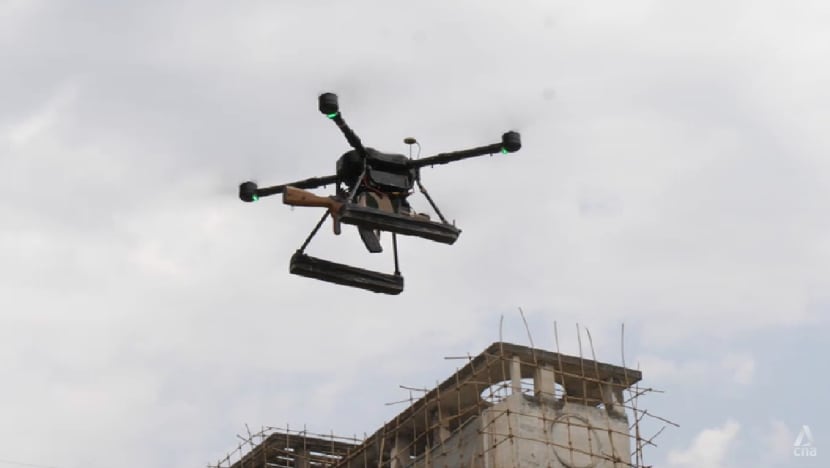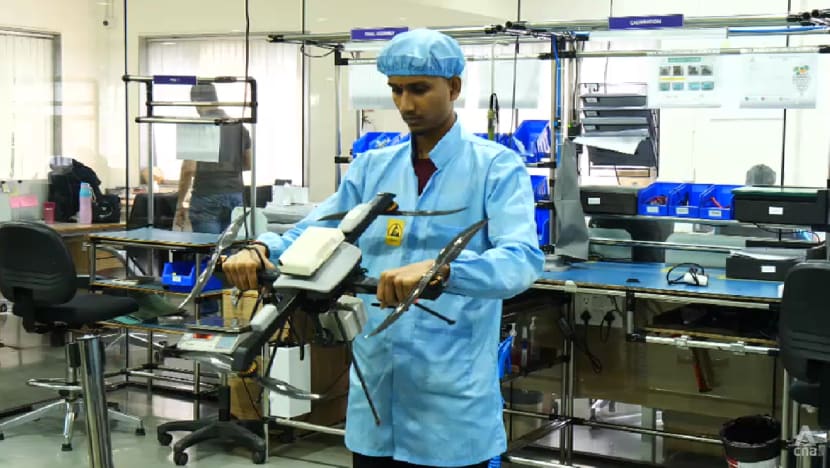India steps up defence self-reliance by backing startups and easing arms procurement
India now boasts more than 1,000 defence startups, up from just a handful a decade ago.

One area India is focusing on is the rapid development of homegrown drones to strengthen its defence sector.

This audio is generated by an AI tool.
NEW DELHI: India is ramping up domestic defence production as part of Prime Minister Narendra Modi’s long-running push for self-reliance.
The nation – one of the world's top arms importers with Russia its biggest supplier – has been incentivising local startups, creating defence manufacturing hubs, and easing procurement rules amid ongoing security tensions with neighbours China and Pakistan.
In this year’s budget, the country raised its defence spending by nearly 10 per cent to about US$81 billion.
While the effort is still a work in progress, it marks a dramatic shift in India’s defence posture from dependence on imports to cultivating homegrown solutions at scale, said analysts.
PUSH FOR SELF-RELIANCE
Earlier this month, Modi said this push has given India a degree of strategic autonomy, which enabled New Delhi to plan and execute airstrikes on Pakistan as part of Operation Sindoor in May.
“Imagine if we were not self-reliant, could we have executed Operation Sindoor with such swiftness?” he added.
“We would have been plagued by worries over who might supply us, whether or not we would get the required equipment, and so on.”
Despite the drive towards self-reliance, some observers pointed out the country remains dependent on Russian jets, French aircraft, and electronics from the United States and Israel – making its military operations vulnerable to vetoes and sanctions.
Retired colonel Rajneesh Singh, a research fellow at the Manohar Parrikar Institute for Defence Studies and Analyses, said gaps in radars and electronic warfare systems continue to impede the momentum of India’s defence production.
Yet, New Delhi has also sought technology transfers and partnerships with foreign suppliers in an effort to close the knowledge gap.
Experts noted that India has had some success in developing advanced military technology.
For instance, its BrahMos supersonic cruise missile system has drawn interest from at least 15 countries after its use in Operation Sindoor.
India now boasts more than 1,000 defence startups, up from just a handful a decade ago.
These are central to the Modi government’s ambition to diversify its suppliers and modernise domestic capabilities.

GROWING DRONE ECOSYSTEM
One area India is focusing on is the rapid development of homegrown drones to strengthen defence.
Some drones are compact enough to be carried in a soldier’s backpack and deployed to monitor India’s vast, porous borders.
Vipul Joshi, chief financial officer of Indian drone manufacturer ideaForge, said these drones are useful for real-time intelligence and monitoring activities, including detecting infiltration attempts.
Earlier this year, the startup secured an order worth about US$16 million from India’s army for its hybrid mini unmanned aerial vehicle systems, under new initiatives that have made it easier for innovative local firms to supply the military.
Drones can also carry small payloads, making them suitable for missions ranging from reconnaissance to logistics support.
In recent years, the war in Ukraine and clashes along the India-Pakistan border have shown how drones can effectively challenge tanks in combat.
Military demand for unmanned aerial vehicles is taking off as they are inexpensive to build, easy to mass-produce, able to navigate difficult terrain, and eliminate risk to human operators.
Such factors make them especially valuable for a country like India, whose borders stretch from arid deserts to icy mountain ranges, said observers.
ideaForge’s Joshi highlighted that militaries are increasingly moving beyond reconnaissance drones to adopt loitering munitions – which loiter in an area until striking a target, and logistics drones – which deliver items, as part of their arsenals.

















